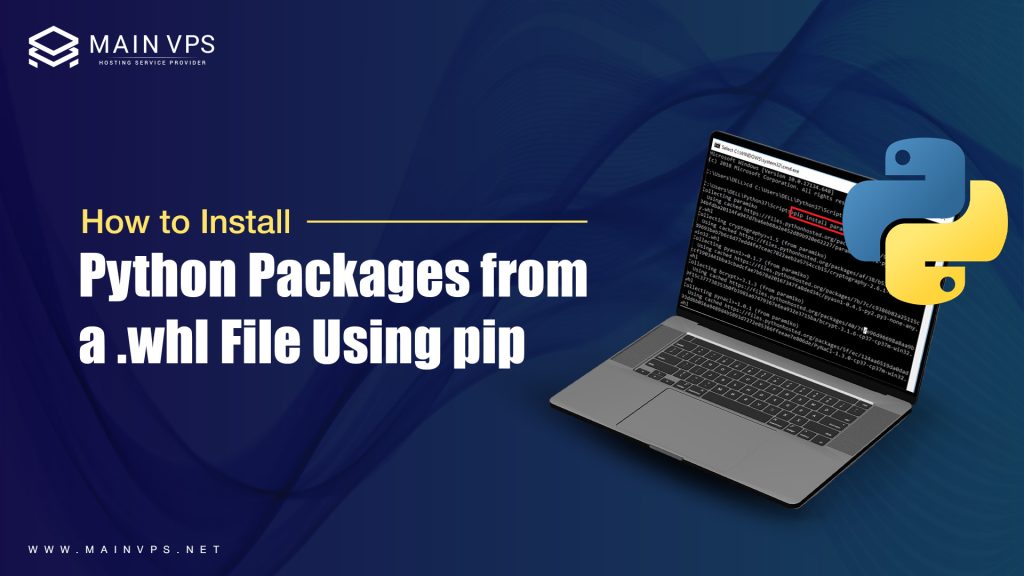
If you’ve ever tried installing a Python package and ran into endless errors or connection issues, you’re not alone.
One lifesaver that often goes overlooked is the .whl file—short for Wheel. It’s a pre-built package that makes installing Python libraries faster, easier, and a lot less frustrating—especially on systems where building from source is a hassle.
Let’s break it down in plain language and walk you through everything you need to install a .whl file with pip, step by step.
What is a .whl File (and Why Should You Care)?
In Python, a .whl file (pronounced “wheel”) is a ready-to-install package format that skips the headache of compiling source code during installation.
Think of it as a zip file that’s already compiled and prepped—no messing with C compilers or dependencies.
Why use .whl files?
- No Compilation Needed – You don’t need a compiler or build tools.
- Offline-Friendly – You can install
.whlfiles without internet. - Faster Installs – Saves time, especially with big or complex libraries.
- Fewer Errors – Avoid cryptic build failures on Windows or Mac.
Prerequisites Before You Begin
Make sure you have the following set up:
| Requirement | How to Check/Install |
|---|---|
| Python | python --version or python3 --version |
| pip (Python’s Installer) | pip --version or python -m pip --version |
| The Correct .whl File | Must match your OS (Windows/Linux/macOS), Python version, and architecture (32-bit or 64-bit) |
Step 1: Download the .whl File
Here’s where most people trip up: you need the right wheel file.
Where to find .whl files:
- Official PyPI website: https://pypi.org/
- Unofficial Windows binaries: https://www.lfd.uci.edu/~gohlke/pythonlibs/
- Package-specific GitHub releases or internal repos for enterprise apps
File naming structure explained:
Example filename:
numpy-1.25.0-cp310-cp310-win_amd64.whl
numpy: The package name1.25.0: Package versioncp310: Python 3.10 (CPython)win_amd64: 64-bit Windows
📌 Pro Tip: If your Python version is 3.11, do NOT download a cp39 wheel—it won’t work.
Step 2: Install the .whl File with pip
- Open Terminal or Command Prompt
- On Windows: Press
Windows + R, typecmd, and hit Enter. - On macOS/Linux: Open your terminal app.
- Navigate to the folder where your
.whlfile is
bash
cd /path/to/your/file
- Run the install command
bash
pip install your-package-name.whl
Example:
bash
pip install numpy-1.25.0-cp310-cp310-win_amd64.whl
Or, if you’re using Python 3 specifically:
bash
python3 -m pip install filename.whl
Step 3: Verify That It Worked
After the install, open Python:
bash
python
Then try importing the package:
python
import numpy
No errors? Success. You’ve installed from a .whl file like a pro.
Troubleshooting Common Errors
| Issue | What to Do |
|---|---|
| “Not a supported wheel” | Double-check Python version and OS compatibility with the .whl |
| “pip not recognized” | Ensure Python and pip are added to your PATH |
| “Permission denied” | Add sudo (Linux/macOS) or run CMD as admin (Windows) |
| SSL or proxy errors | Use --trusted-host pypi.org or download .whl file manually |
When Should You Use .whl Over Standard pip install?
While pip install package-name is great, sometimes:
- Your system doesn’t have a compiler
- You’re on Windows and hitting Visual C++ errors
- You need to install packages offline (e.g. in air-gapped environments)
- You want to install an older or specific build
.whl is the cleanest option in these cases.
Extra Insight: Virtual Environments + .whl Installs
Always consider installing packages into a virtual environment:
bash
python -m venv env
source env/bin/activate # On Windows use: env\Scripts\activate
pip install your.whl
Why?
- Keeps dependencies clean and isolated
- Helps avoid conflicts with system Python
FAQs: Installing Python Wheel Files
Q1: Can I install a .whl file on a Mac or Linux system?
Absolutely. Just ensure the .whl file matches your system and Python version.
Q2: How do I know which wheel file version I need?
Use:
bash
python -c "import platform; print(platform.python_version())"
Also, check:
bash
python -c "import struct; print(struct.calcsize('P') * 8)"
To know if your system is 32-bit or 64-bit.
Q3: What if the package has dependencies?
Install the .whl file first, then run:
bash
pip install --no-index --find-links=. your_package.whl
to use local packages or allow pip to fetch dependencies online.
Q4: Is there a GUI tool for installing .whl files?
Not directly, but tools like pipwin and Anaconda Navigator help manage packages with easier interfaces.
Q5: Can I use .whl for older Python versions?
Yes, if the .whl supports it. Always match the cpXY (e.g. cp39 for Python 3.9) to your interpreter version.
Final Thoughts
Installing Python packages via .whl isn’t just a hack for the pros—it’s a practical, efficient tool every Python user should know.
Whether you’re fighting with compile errors, working offline, or just want to install faster, wheel files have your back.





